
Imaging of Light Absorption and Photosynthesis
Blog, Plant Physiology: On The Inside, Research, Research BlogDue to its ease of use and noninvasive nature, variable chlorophyll fluorescence techniques have become increasingly popular for estimating photosynthetic parameters. Most measurements of variable chlorophyll fluorescence in complex plant tissues and surface-associated cell assemblages (e.g. biofilms)…
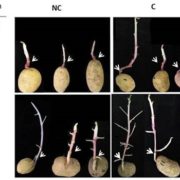
Suc Signals Induce Etiolated Stem Branching
Blog, Plant Physiology, Plant Physiology: On The Inside, Research, Research BlogPlant shoot branching is determined by apical dominance, a process in which the apical bud (shoot tip) inhibits the outgrowth of axillary buds further down the stem to control the number of growing branches. In response to this inhibition, plants have evolved rapid long-distance signaling mechanisms…
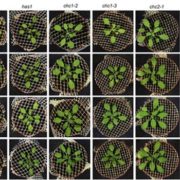
Clathrin and Stomatal Function
Blog, Plant Physiology, Plant Physiology: On The Inside, Research, Research BlogVesicle traffic to and from the plasma membrane plays an integral role in regulating protein localization and activity, membrane composition, and cell surface area. Clathrin is a structural protein that forms a lattice-like complex composed of two H chain subunits (CHC1 and CHC2) and two light chain…
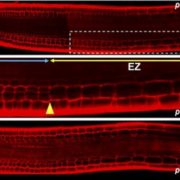
Cell Fate Specification in Arabidopsis Roots
Blog, Plant Physiology: On The Inside, Research, Research BlogPattern formation in multicellular organisms is the result of coordinated cell division and cell fate determination. In animals, cell fate is determined mainly by a cell lineage-dependent mechanism, whereas positional information is thought to be the primary determinant of cell fate in plants. Currently,…

Leaf Photosynthesis and Biomass Accumulation
Blog, Plant Physiology, Plant Physiology: On The Inside, Research, Research Blog0 Comments
/
Improving photosynthetic efficiency is a major target for increasing crop biomass production and yield potential. The canopy photosynthetic efficiency, which is determined by leaf area index, canopy architecture, and leaf photosynthetic properties, plays an important role in determining biomass accumulation.…
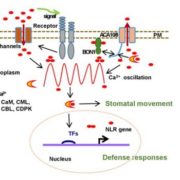
A Regulator of Calcium Signatures Revealed
Blog, Plant Physiology, Plant Physiology: On The Inside, Research, Research BlogCalcium (Ca2+) is an important cellular second messenger for diverse developmental processes and environmental responses in both plants and animals. Transient increases in cytosolic Ca2+ are activated in plants during a host of environmental and developmental processes, including root growth, stomatal…
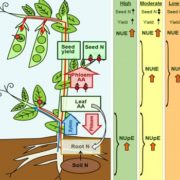
Transporter Function and N Use Efficiency
Blog, Plant Physiology, Plant Physiology: On The Inside, Research, Research BlogNitrogen (N) is an essential nutrient that plants require in large amounts for growth and development. In industrial countries, high N fertilization enables maximum crop yields, and in the last 50 years, the use of synthetic N fertilizers has increased dramatically to meet food demands. Improving the…
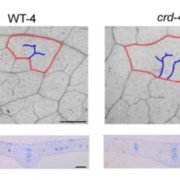
Venation, Water Transport and Photosynthetic Rate
Blog, Plant Physiology, Plant Physiology: On The Inside, Research, Research BlogLand plants lose vast quantities of water to the atmosphere during photosynthetic gas exchange. To supply this high demand for water an internal transport system comprised of xylem conduits irrigates the leaf. Selection for greater rates of photosynthesis and increased productivity is believed to have…
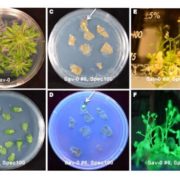
Efficient Plastid Transformation in Arabidopsis
Blog, Plant Physiology, Plant Physiology: On The Inside, Research, Research BlogThe plastid genome of higher plants encodes about 100 genes, the products of which assemble with approximately 3,000 nucleus-encoded proteins to form the plastid transcription and translation machinery and carry out complex metabolic functions, including photosynthesis and fatty acid and amino acid biosynthesis.…

